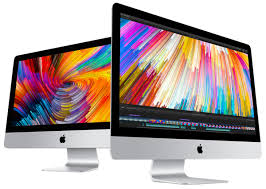Does it bother you when your Mac crashes? If your Mac is experiencing these conditions, such as: freezes and app crashes, your Mac won’t boot, unstable fans, strange LED behavior, and power issues, it’s a reminder that your hemp cart may be crashing in the near future or errors, etc. How should these situations be resolved? Let’s take a look below!

Freezes and app crashes
Do you often see the spinning pinwheels of death? Is the application unresponsive, slow, or completely crashing? Did your Mac suddenly freeze for no apparent reason?
Many things can cause these problems, but some are more common than others. Running out of disk space can often cause performance issues, especially when you wake your Mac from sleep mode. Memory and storage issues, or simply a machine biting more than it can chew, could also be to blame.
If you encounter these issues, try the following possible fixes:
1. Create more disk space.
You might just need to give macOS some breathing room. Try to keep about 10 GB of free space on the drive for macOS housekeeping. You can delete and move files to free up more space on your Mac.
2. Run memtest86 to check your Mac‘s memory for problems.
You can also hold down the D key while your Mac starts up to run Apple Diagnostics and scan for other hardware problems.
3. Run Disk Utility.
If your machine has a hard drive, launch Disk Utility, select the drive, and click Verify Disk. If you see any errors, click Repair Disk. This isolates bad sectors, so macOS knows not to store data in these parts of the drive (a common cause of freezes).
4. Reinstall macOS.
This will eliminate any software related issues and free up a lot of space. Then your Mac should run as fast as it can manage.
5. Remove resource-intensive applications.
If you suspect that these problems are caused by aging hardware, ditch apps like Chrome and opt for lighter options like Safari. Try SimpleNote and GIMP instead of Evernote and Photoshop.
Your Mac won’t start
Many of us panic when our computer fails to boot properly. You may see a solid black or gray screen, a black screen with question marks, or an error message about a problem with your machine. As with system crashes, there are a number of reasons why a Mac can have DOA. This could be a problem with cables, SMC, software updates, or a botched OS upgrade.
If your Mac won’t start up properly, try the following possible fixes:
1. Check the cables.
Make sure everything is plugged in and the wall outlet is turned on (if applicable). It’s always worth checking first.
2. Boot into safe mode.
To do this, hold down the Shift key while your Mac starts up. Safe Mode will verify your disk and then boot your machine with the bare minimum required to run. Then you can try to restart normally.
3. Reinstall macOS.
When all else fails, you can boot into recovery mode and reinstall the operating system from scratch.
Unstable fans, strange LED behavior, and power issues
The System Management Controller (SMC) is responsible for low-level operations that do not necessarily depend on the main operating system. These operations happen even before the operating system starts, and on Intel-based Macs, the SMC chip controls them.
If there is a problem with the SMC, you may experience a constantly running fan, a misbehaving battery and indicator LEDs, or a keyboard backlight that doesn’t respond to controls. You may also experience power issues such as sudden shutdowns and refusal to power on.
Even under low CPU load, the SMC can cause issues such as battery charging, undetected external peripherals, and poor performance. Most of these problems are just annoying, but some can seriously affect the way you use your machine.
Fortunately, the solution to this problem is relatively simple; just follow the instructions to reset your Mac’s SMC.
>>>>>>>>>>>>>>>Mac battery
Thanks for reading, hope it helps!
Friendly reminder: If you need to replace your phone battery, this battery store will be a good choice: www.batteryforpc.co.uk
